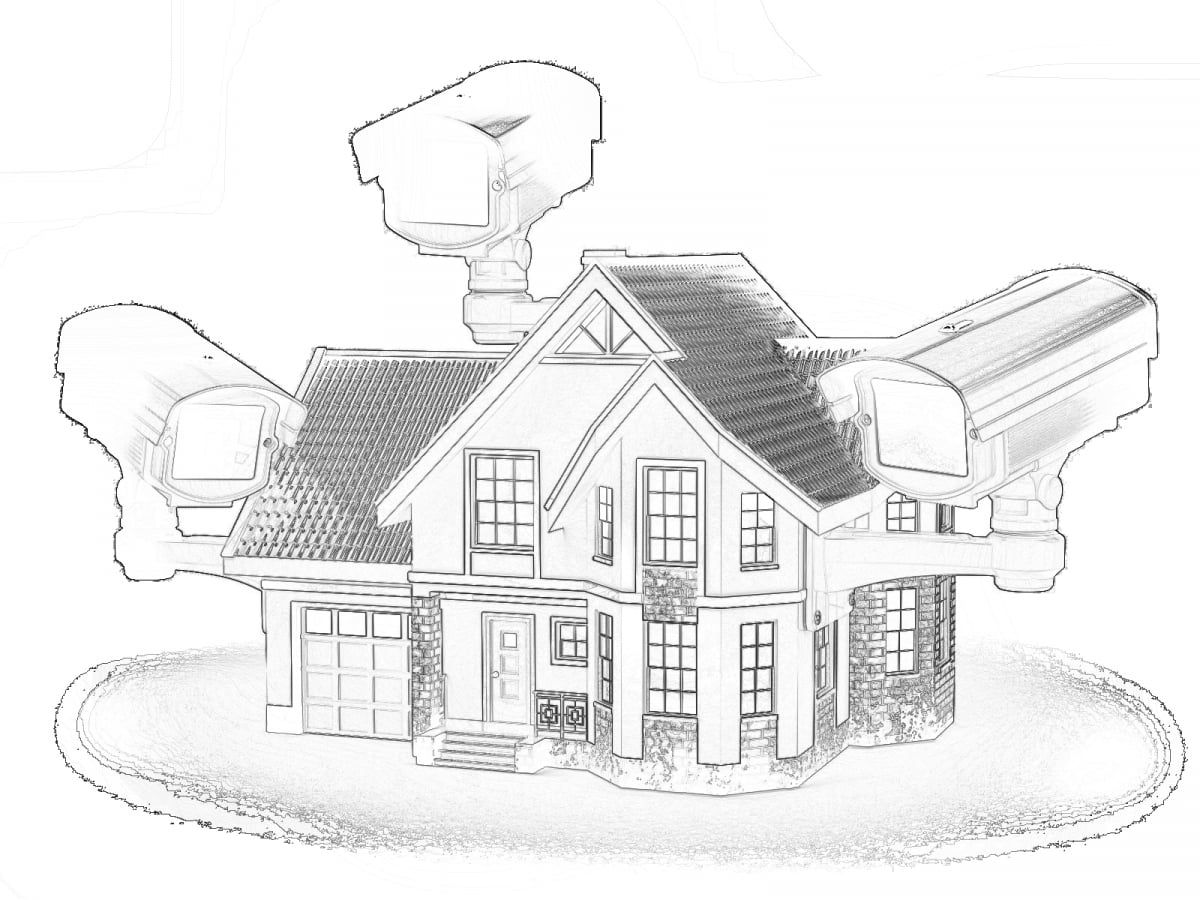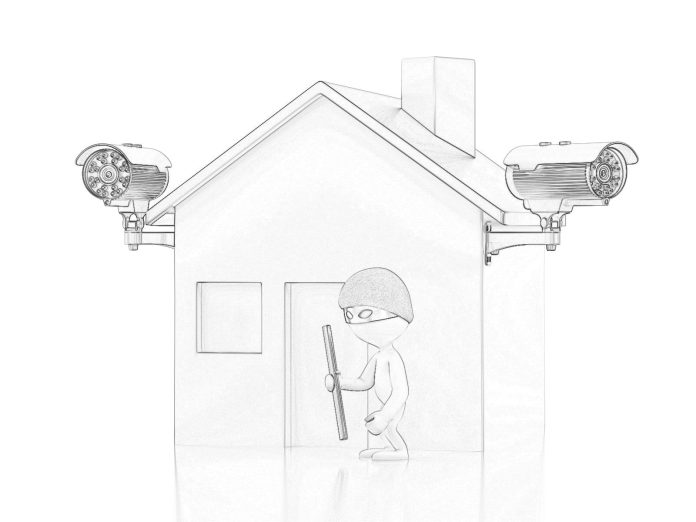Video verification is unquestionably the most important technology to hit alarm monitoring since the invention of the McCulloch Loop and while many manufacturers support the technology, creating the ecosystem necessary to bring such services to market remains elusive outside of proprietary end-to-end solutions.
VIDEO verification – you’d imagine this technology would sell itself. The ability of modern HD cameras supported by IR to inform monitoring station operators of intrusion events with close to 100 per cent catch rate should mean video verification in every business and every home but things are not working out that way at all. Sure, there’s growth in this part of the market. But there are layers of complexity from sales techniques, to comms and power, through to monitoring software capable of handling the task.
The ability to deliver video verification in real time over existing networks is certainly with us. We’ve had H.264 for a long time and now that H.265 and proprietary formats like Zipstream, and Hikvision’s H.264+ are here in support of affordable 720 and 1080p cameras – there’s really no excuse not to use this technology to consign false alarms to history once and for all.
Selling services should not be a problem – video monitoring of alarm events offers great power to operators alongside video verification. They can check on particular events, monitor late closings at convenience stores in real time, as well as handle access management of the delivery of high value goods outside of working hours. We are certainly seeing a push towards integration of access control and CCTV with remote control by monitoring stations in large commercial and industrial applications. But high volume domestic penetration rates are lagging.
Lack of standards is part of the issue. The Australian Standard on alarm systems is getting a bit long in the tooth and the task of re-writing it to include the lateral explosion of digital networks is likely to challenge the harried experts who take it on. In some ways a new standard will be made simpler by a universal IP standard of signal encryption, network uptime and redundancy levels. But when you start trying to write things like 4G comms paths, mobile apps and domestic network routers into an alarm standard, the piece of string starts getting very long indeed.
Getting video verification into a standard as best practise for alarm systems is another balancing act. Video really is the best way to affordably confirm alarm events and specifying minimum performance would not be too challenging. But there are privacy issues, issues with wireless sensor cameras, which can’t be asked to work too hard without clipping battery life, the complexity of bringing domestic network components into the security solution and the ability of monitoring stations to handle video without too much operational latency. Mucking around waiting for video streams to upload from typical domestic internet connections is a drag for busy operators driving event streams in peak periods.
From the point of view of manufacturers and distributors, most carry solutions that support video verification but there’s a sense that parts of the market are still in mid-air over this technology. There are more and more solutions coming through but each represents engineers’ best attempts to circumvent challenges integral to the process of moving coherent CCTV streams from the site of an event to the workstation of an operator. And the technical complexity doesn’t take into account the challenges of building an end-to-end monitoring network – from remote site to monitoring station – capable of supporting quality video verification in a serious way.
Who has what?
“At this point in time, we can design video verification options around low-level communication such as contact closure,” says Bosch’s James Layton. “Through this, cameras can be triggered to email footage at the time an event occurs. We are in the process of developing a higher level of integration where the cameras will interface with the panel via the IP network, becoming virtual inputs and outputs for the panel.
Meanwhile, CSD’s Paul Knight says the company’s soon to be released Paradox EVOHD has this space nicely covered.
“The EVOHD is an enhanced version of the EVO192, and is the core of the Paradox remote Insight management software,” explains Knight. “With the correct equipment installed, all HD video and audio recordings are delivered for visual verification and reporting. When an alarm is triggered, the HD77 sends a pre-recorded video (360p) in colour or black and white (night vision) to allow users and the central monitoring system to view what triggered the alarm, generating 10 images (jpegs). A user can also access HD 720p video and audio recordings, as required.”
At Hills, Matt Bailey says DSC’s Impassa and PowerSeries NEO both support video verification either back to the end user or to a monitoring station on an alarm.
“Not only are installers and end users asking for this, but also monitoring stations which have the capability to monitor video verification integrated into their automation software,” Bailey explains.
Alongside DSC, Hills Reliance 128 also integrate with several options to provide video verification if required.
“This is not a regular feature request partly because of perceived privacy issues particularly amongst residential customers and also the fact that most of Australians unfortunately still have sub-par internet speeds,” explains James Todd. “However, this is certainly an area for future uptake.”

Ness’ Neil Morgan confirms that video verification is “on our minds at the moment as we’ve almost finished testing an innovation new system which will very cleverly interface with industry standard IP cameras”.
“We certainly get asked for video verification but we also know that many users are intimidated by complex IP setup, something else we’re planning to address,” Morgan explains.
Over at QSS, Rob Lucas says video verification is now being asked for by more installers.
“Our 2GIG panel in conjunction with Alarm.com offers that form of verification; along with audio verification with the monitoring station,” Lucas says. “When it comes to verification of intrusion, image sensors will certainly cater for people who do not have a budget that can extend to include a full IP surveillance system.
Meanwhile, Honeywell reports that video verification was a feature that used to be offered but changes in technology have impacted on the way video verification is most commonly applied in many applications.
“With the penetration of video kit solutions that also have their own remote log in (APP) feature and alarm notifications, the architecture of video verification solutions has changed,” Honeywell reports. “Video kit solutions are able to take an input from a security system, then generate an email with the video clip attached.”
There are other players in this space, too. These include the likes of Risco, which offers a proprietary cloud-based solution. Suretek has a well-developed solution with RemoteGuard, which employs Mobotix cameras and was developed for commercial grade applications. It’s available from CAMS monitoring stations. Meanwhile, BENS is another monitoring provider that has put a lot of work into CCTV monitoring and there are a number of providers leveraging Bold Technologies’ Manitou to provide high quality video monitoring services to commercial customers.
But the current state of play when it comes to video verification as a benchmark for all alarm installations is that it’s going to take some more time. It’s not that the technological capability isn’t there, though many capable-sounding products are only just coming into view in 2016. Instead there are holes in multiple places in the path to market. In some cases, the friction relates to a lack of networking capability from installation companies, in other cases it’s low bandwidth, lack of sales skills, the lack of a business model, the lack of standards and lack of push from insurers.
One thing is certain. In order to appeal to end users, manufacturers, software providers, monitoring stations and installers will need to work together to develop technologies and business models that make complete sense to every link in the vertical. ♦
By John Adams












